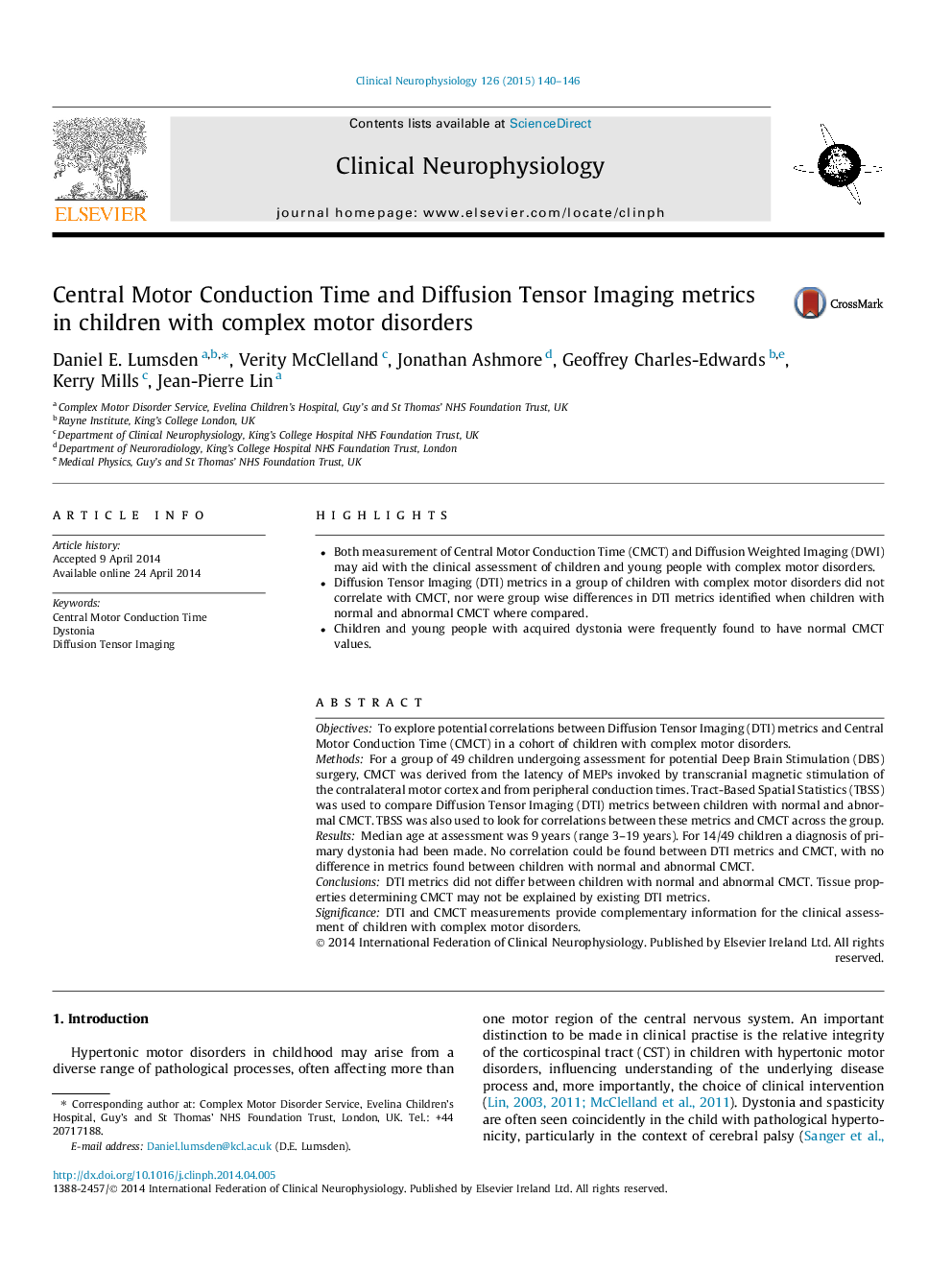| Article ID | Journal | Published Year | Pages | File Type |
|---|---|---|---|---|
| 3043219 | Clinical Neurophysiology | 2015 | 7 Pages |
•Both measurement of Central Motor Conduction Time (CMCT) and Diffusion Weighted Imaging (DWI) may aid with the clinical assessment of children and young people with complex motor disorders.•Diffusion Tensor Imaging (DTI) metrics in a group of children with complex motor disorders did not correlate with CMCT, nor were group wise differences in DTI metrics identified when children with normal and abnormal CMCT where compared.•Children and young people with acquired dystonia were frequently found to have normal CMCT values.
ObjectivesTo explore potential correlations between Diffusion Tensor Imaging (DTI) metrics and Central Motor Conduction Time (CMCT) in a cohort of children with complex motor disorders.MethodsFor a group of 49 children undergoing assessment for potential Deep Brain Stimulation (DBS) surgery, CMCT was derived from the latency of MEPs invoked by transcranial magnetic stimulation of the contralateral motor cortex and from peripheral conduction times. Tract-Based Spatial Statistics (TBSS) was used to compare Diffusion Tensor Imaging (DTI) metrics between children with normal and abnormal CMCT. TBSS was also used to look for correlations between these metrics and CMCT across the group.ResultsMedian age at assessment was 9 years (range 3–19 years). For 14/49 children a diagnosis of primary dystonia had been made. No correlation could be found between DTI metrics and CMCT, with no difference in metrics found between children with normal and abnormal CMCT.ConclusionsDTI metrics did not differ between children with normal and abnormal CMCT. Tissue properties determining CMCT may not be explained by existing DTI metrics.SignificanceDTI and CMCT measurements provide complementary information for the clinical assessment of children with complex motor disorders.
